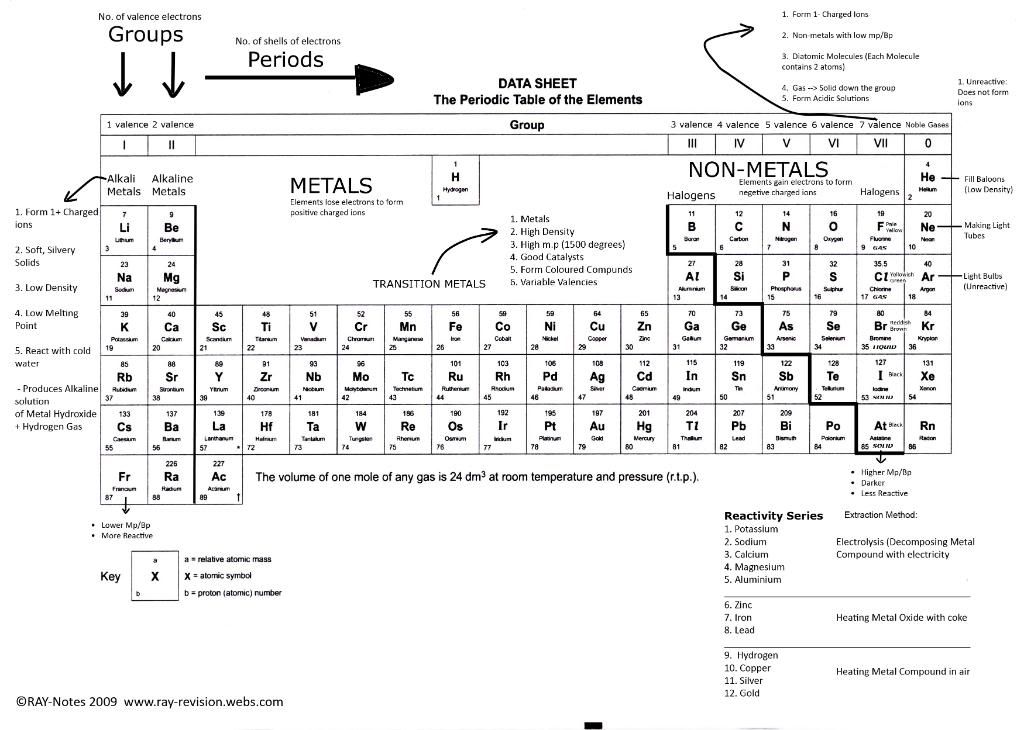Giant metallic lattices- a lattice of positive ions in the sea of electrons.
Giant ionic lattices- a lattice of alternating positive and negative ions. (NaCl)
Giant molecular lattices- a giant molecule making the lattice (Diamond)
Simple molecular lattice- simple molecules in a lattice held together by weak forces. (Chlorine gas)

Diamond (Carbon form)
Giant ionic lattices- a lattice of alternating positive and negative ions. (NaCl)
Giant molecular lattices- a giant molecule making the lattice (Diamond)
Simple molecular lattice- simple molecules in a lattice held together by weak forces. (Chlorine gas)
Metal Crytals
- High density due to dense packing.
- Metals in the lower parts of the Periodic Table have the highest densities since they have higher atomic masses.
- Malleable and ductile- Metals are malleable since the positive ions are arranged in layers which can slide over each other without breaking the structure. Bonds are strong but not rigid.
- Conducts electricity and heat well- mobility of delocalisied electrons helps to conduct electricity and heat.
- Have crystalline structure.
- Alloys are formed by mixing molten metals together and allowing them to cool.
- Alloys are stronger than individual metals. This is because the presence of an impurity atom of a different size prevents slipping between the layers making them more stronger.
- Important alloys- Brass- made of zinc and copper and Stainless steel- chromium, nickel and iron.
- Ionic compounds form lattices consisting of positive and negative ions.
- There are equal numbers of both types of the ions so the charges balance.
- Ionic compounds are therefore neutral.
- They are hard
- More brittle than metallic crystals. The layers of ions cannot be slid over each other or the lattice breaks due to bringing same charges together.
- Dissolving the ionic lattice in water however breaks up the lattice and keeps ions apart.
- Ions in solution or when ionic compounds are molten (melted) means that the solution can carry a current since the ions are free to move hence can carry current.
- Ionic compounds that don't dissolve in water means that the ionic bonds must be really strong!
.JPG)

Graphite, Diamond and Silicon (IV) oxide.
- Giant molecular crystals have strong covalent bonds.
- elements- carbon - diamond and graphite and in compounds- silicon oxide are examples of giant molecular crystals.
- Diamond and silicon oxide have the similar structure.
- Giant molecular crystals have high melting points and are very hard.
Diamond (Carbon form)
- Tetrahedral structure
- Strong covalent bonds (high bp)
- Rigid and brittle
- No free electrons- doesn't conduct electricity.
- Has free electrons- conducts electricity.
- Carbon atoms arranged in layers which can slip over each other since the layers have weak forces between them (but the carbon atoms have strong covalent bonds)
|
|
Diamond
|
Graphite
|
||
|
|
Property
|
Use
|
Property
|
Use
|
|
Appearance
|
Colourless, transparent crystals that sparkle in light
|
In jewellery and ornamental objects
|
Dark grey, shiny solid
|
-
|
|
Hardness
|
The hardest natural substance!
|
In drill bits, diamond saws, and glass cutters.
|
Soft- the layers can slip over each other, has slippery feel
|
In pencils, as a lubricant.
|
|
Electrical Conductivity
|
Doesn't conduct electricity
|
-
|
Conduct electricity
|
Used as electrodes and carbon brushes in electric motors (physics ain't it :P)
|
Allotropy- When an element can exist in more than one structural form in the same physical state. Like carbon exists as diamond and graphite and both are solids at room temp.
Allotropes-different forms of the same element.





